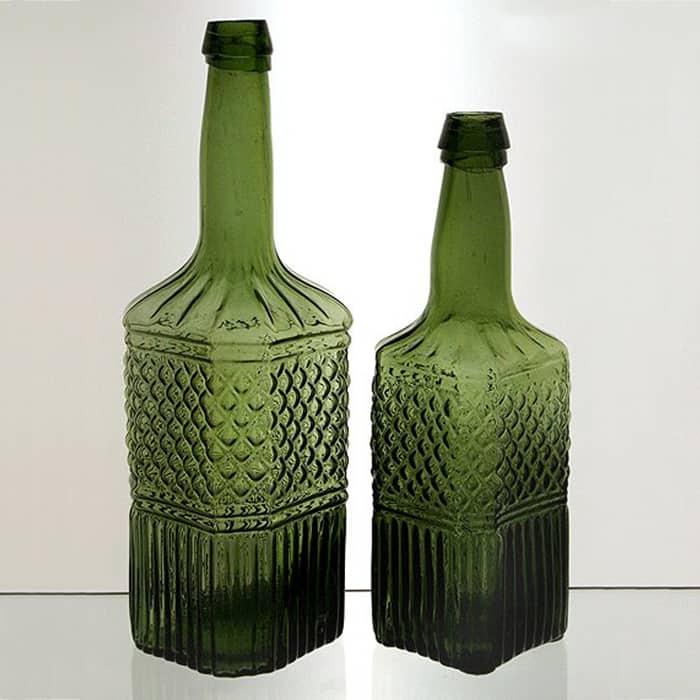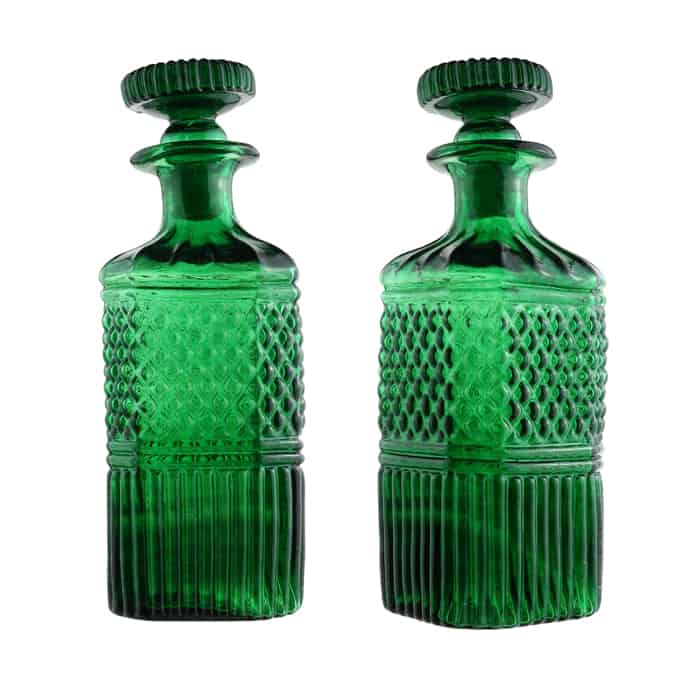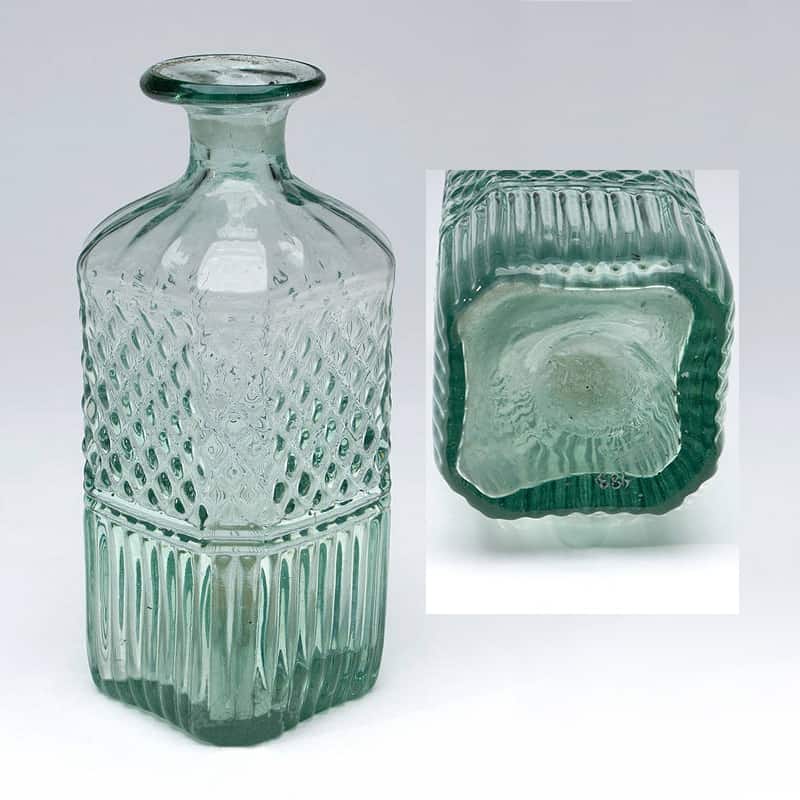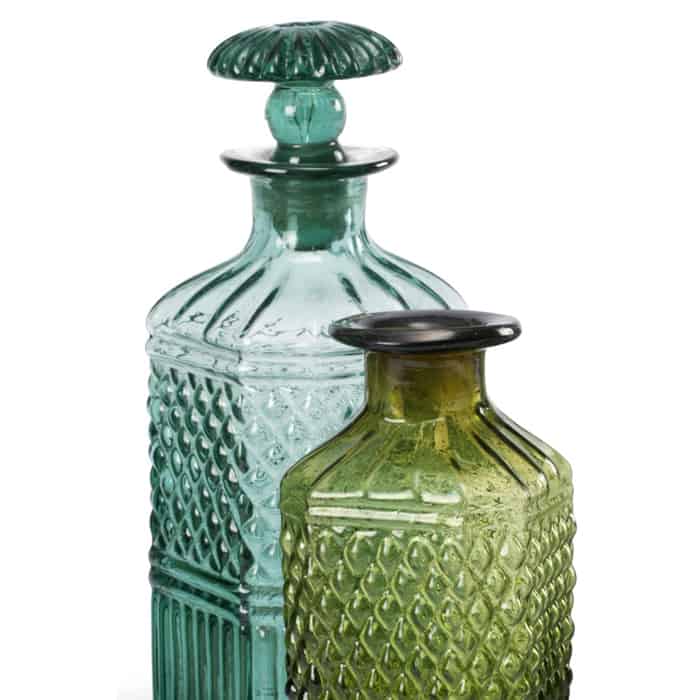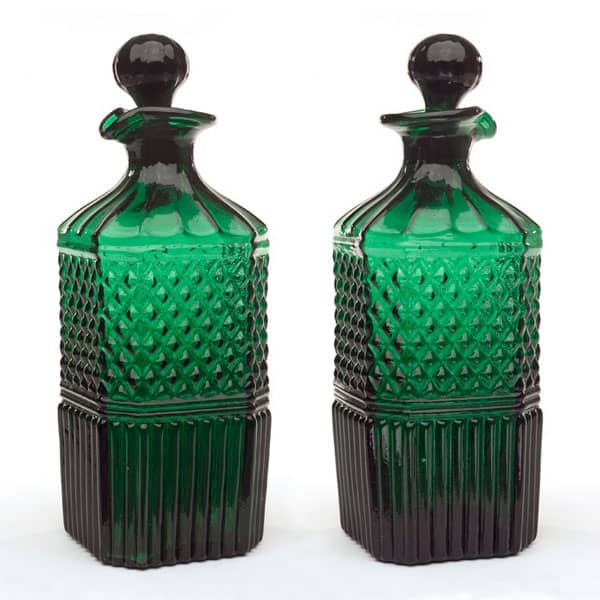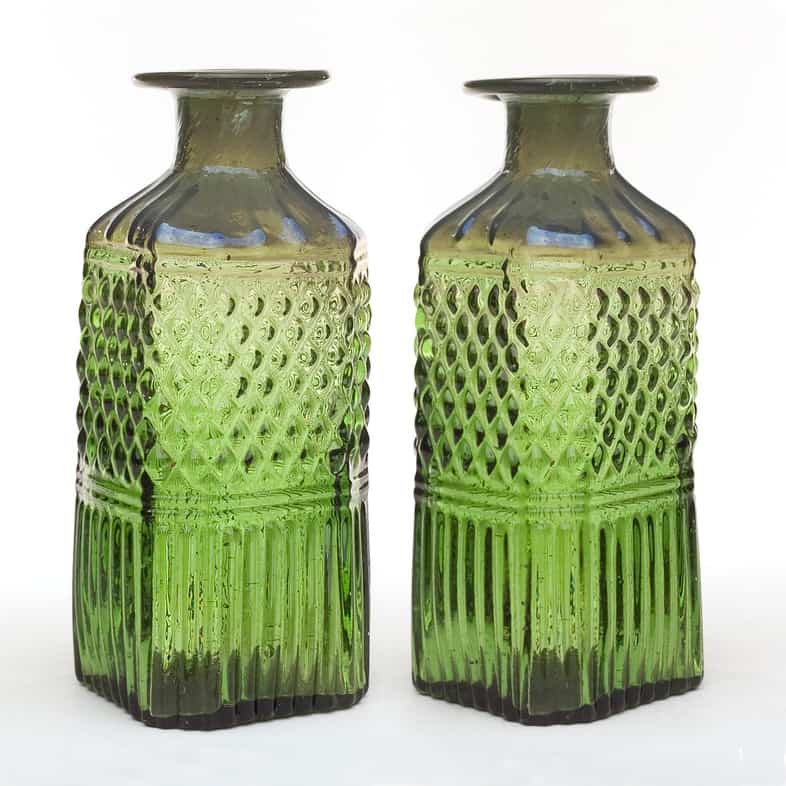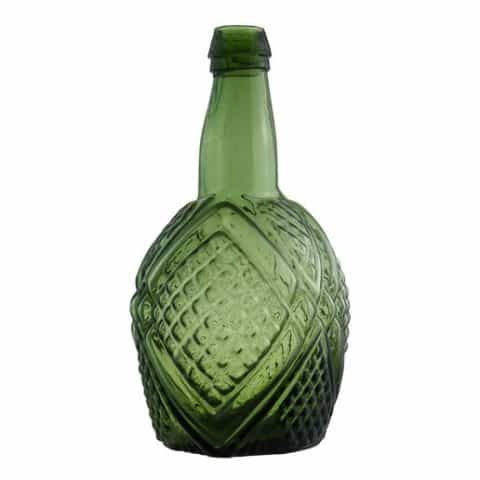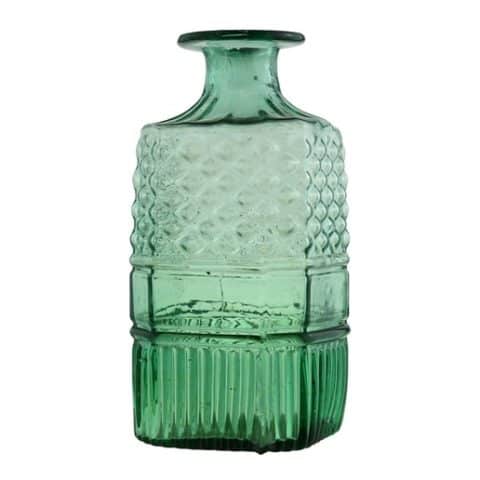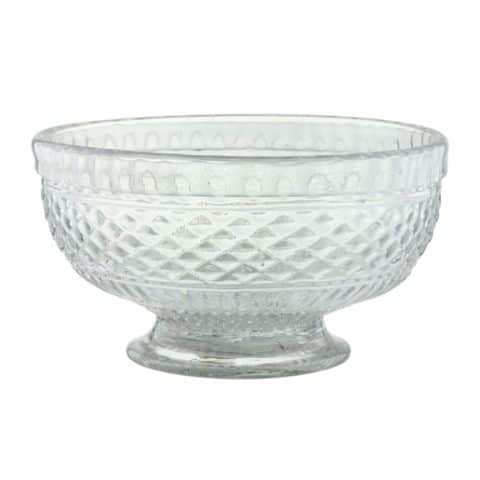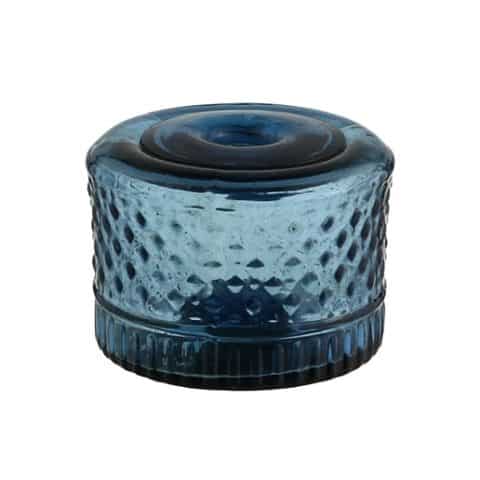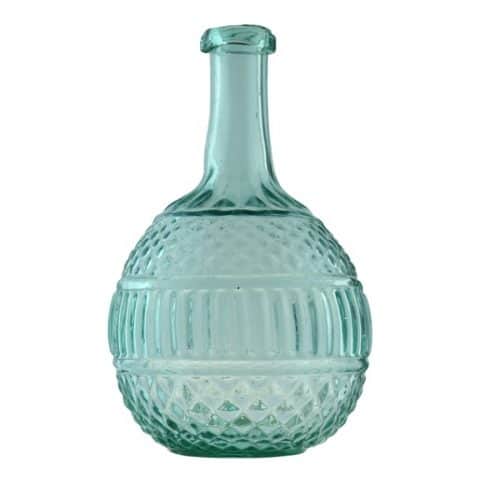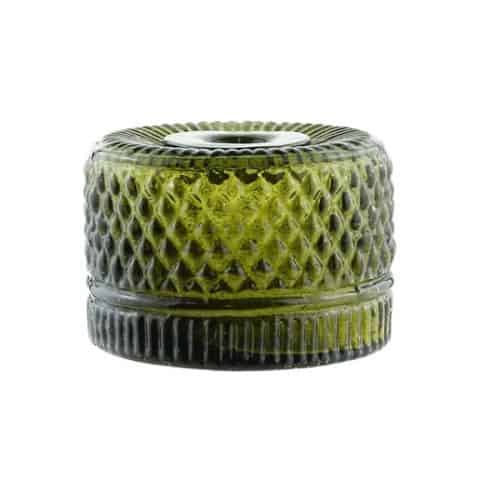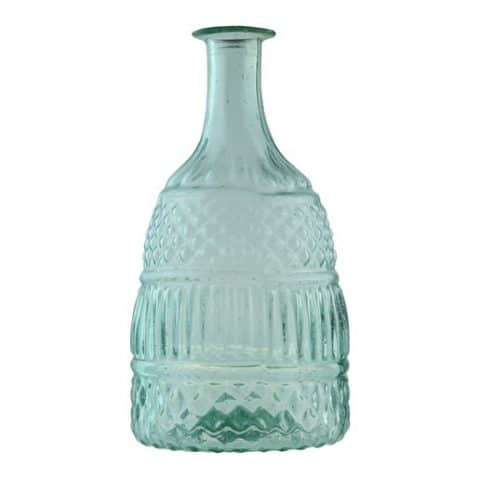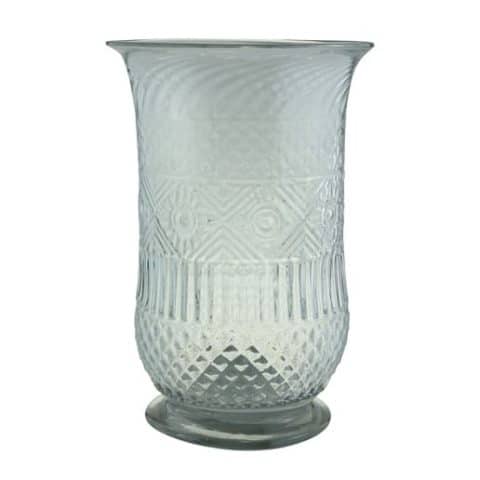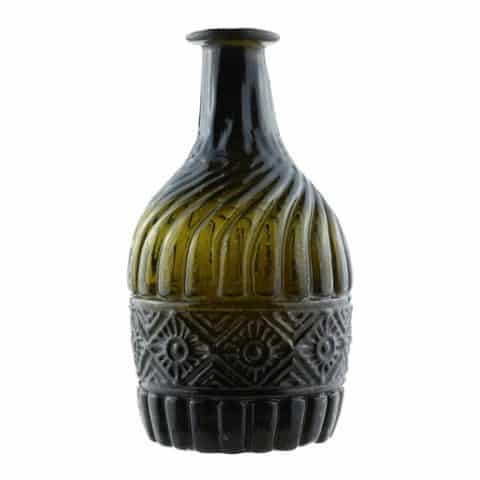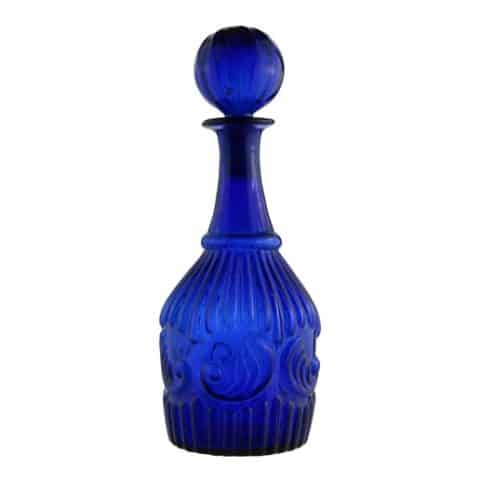GII-28 Decanter
Blown Three Mold
Decanter
GII – 28
Probably Keene Marboro Street Glass Works
Keene, New Hampshire
Olive Green Quart
Provenance: Michael George Collection
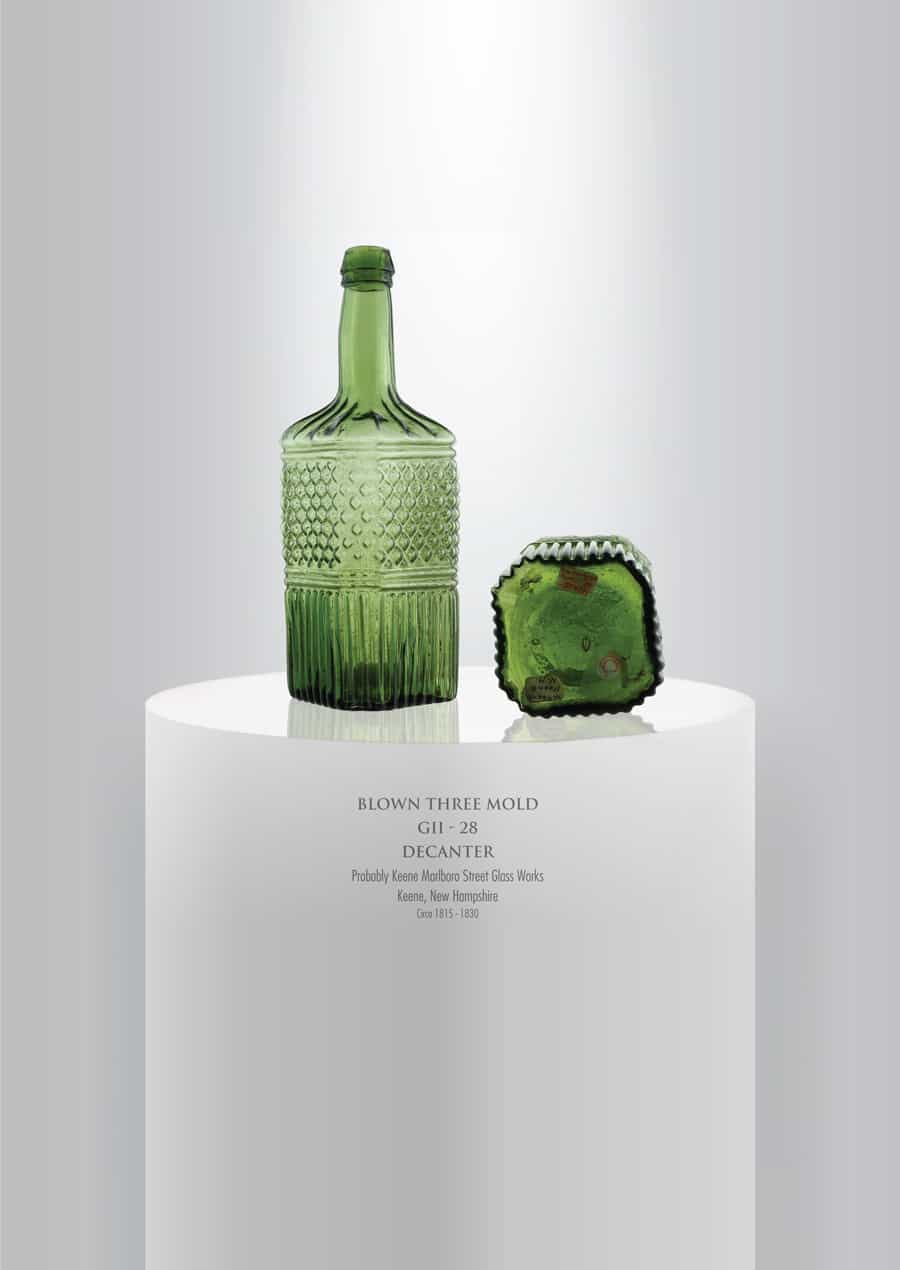
The three main categories of three-mold glass patterns are Geometric, Arch and Baroque. Diamond patterning, also known as diamond diapering or diamond quilting, is the most common geometric design and can be found on tableware items such as decanters, stoppers, cruets, casters, condiment sets, pitchers, punch bowls, pans, dishes, preserve dishes, mugs, tumblers, wine glasses, celery glasses, salts, and doll dishes.
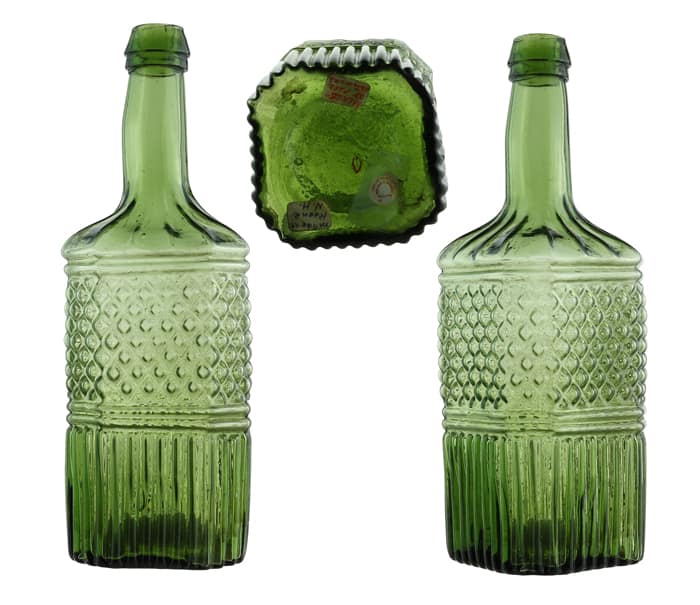
Our museum example represents a quart geometric GII-28 blown three-mold decanter. These decanters are sometimes found with a decanter-type mouth treatment consisting of a short neck and a flared-out rim. They are rarely found with a long neck and an applied mouth treatment like our example.
This example is the same decanter pictured in American Glass, Plate 102, #2. The McKearins refer to these long-neck examples as “bar bottles.” This example is also pictured in A Rare Collection of Keene & Stoddard Glass by Lane, Lane & Pappas, Plate 4, Row 1, #2, listed as “extremely rare.”
See the museum example of a blown three-mold GII-28 decanter in emerald green with a mushroom stopper.
The GII-28 decanters were likely produced at the Keene Marlboro Street Glass Works in Keene, New Hampshire, from 1815 to 1830. The consignor notes that he found GII-28 mold shards during excavations at the old glassworks site on Washington Street. The Keene glassworks opened under the direction of Henry Schoolcraft and his two partners in 1815 and continued in operation under various operating firms for the next 35 years. Although the vast majority of the plant’s products appear to have been unmarked, the factory made several flasks embossed with an owner’s initials or the location name—all of which may be closely dated.
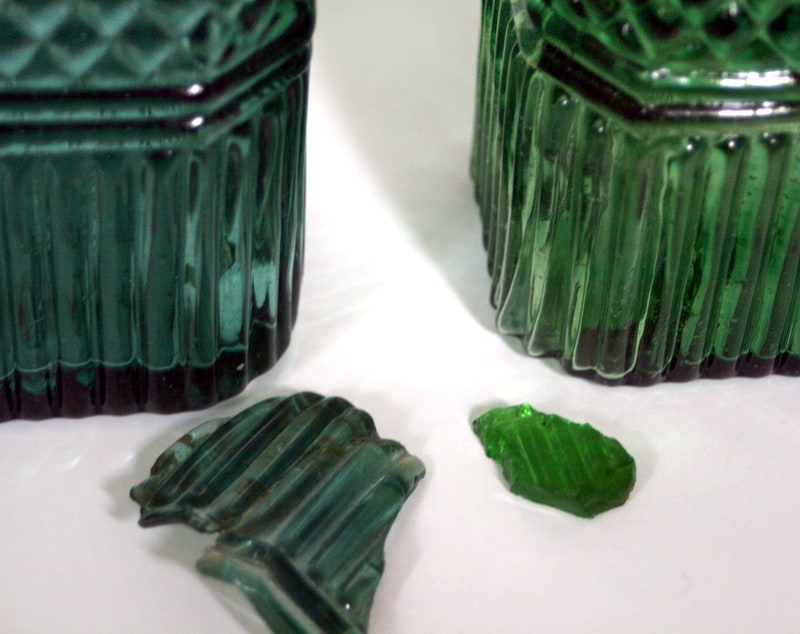
See the museum example of a pint GV-3 “Success to the Railroad” and Horse Pulling Cart historical flask also attributed to the Keene Marlboro Street Glassworks.
See the museum example of a pint GVII-1 Sunburst Flask attributed to the Keene Marlboro Street Glassworks.
This bottle was purchased from a Dick Withington auction many years ago from the Roland Sallada collection. Mr. Sallada was a longtime collector from New Hampshire who lived in the same town as the consignor. The consignor adds, “As a tribute, I brought the GII-28 decanter to his resting site for a little reunion.”
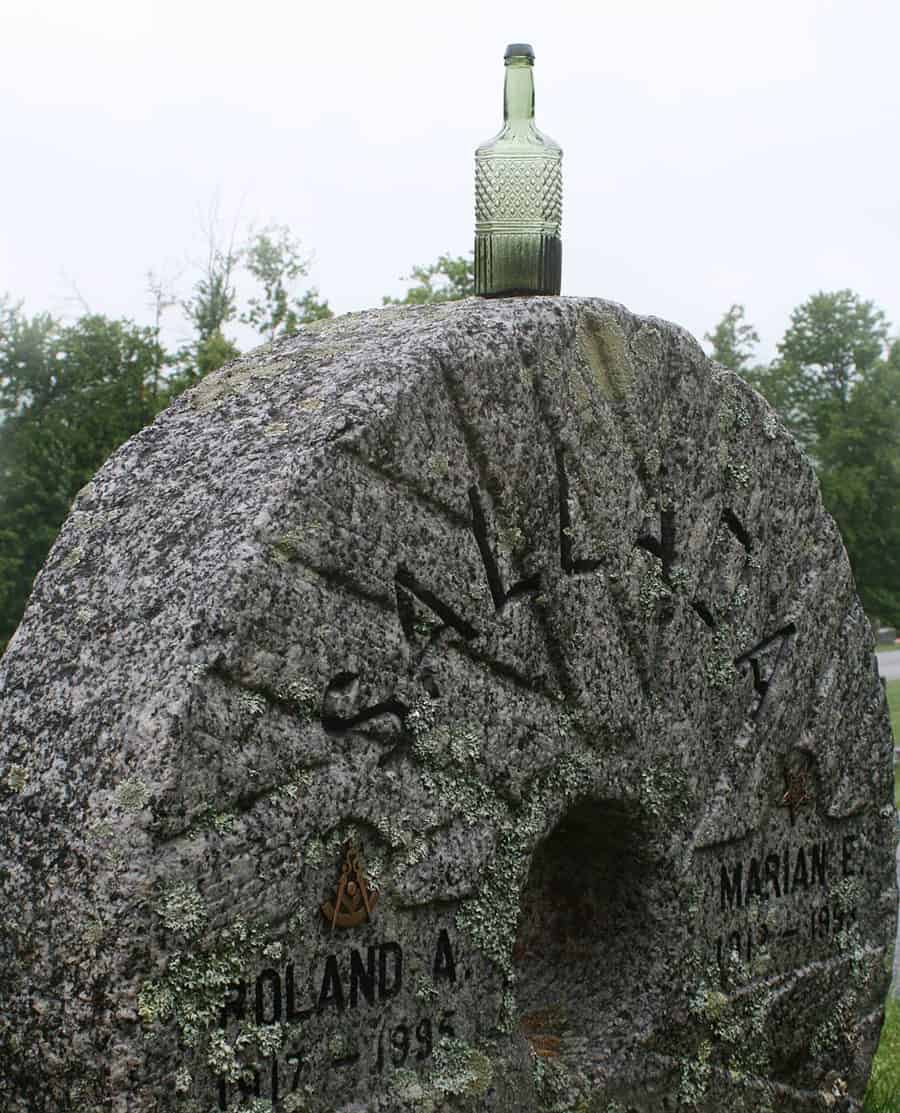
Primary Image: Blown Three Mold GII-18 Decanter imaged on location by Alan DeMaison, FOHBC Virtual Museum Midwest Studio.
Secondary Image: Blown three-mold GII-28 decanter in emerald green with a mushroom stopper from the Michael George collection. Imaged on location by Alan DeMaison, FOHBC Virtual Museum Midwest Studio.
Support: Reference to American Glass by George S. and Helen McKearin, Crown Publishers Inc., New York, 1989.
Support Image: Auction Lot 15: Blown Three Mold Decanter, probably Keene Marlboro Street Glassworks, Keene, New Hampshire, 1820-1840. Square with beveled corners, light sea green, tooled flared mouth – pontil scar, pint; (no stopper). GII-28 A heavy decanter with thick glass. Subtle and beautiful color. Fine condition. – Norman Heckler Jr. & Sr., Norman C. Heckler & Company, Auction #154
Support Image: Auction Lot 86: Blown Three Mold Decanter, England, 1820 – 1840. Gorgeous, vibrant emerald coloration, square decanter form, geometric pattern of diamonds and ribbing, fluted shoulders, tooled flared mouth with pour spout, original matching patterned stopper – polished pontil scarred base, ht. 7 ¾” (including stopper), perfect. MW, GII-28. See McConnell, “The Decanter, An Illustrated History of Glass from 1650.” Rare. A gorgeous, eye-appealing decanter. Ex. Peter Tillou collection. – John Pastor, American Glass Gallery, Auction #32
Support Image: Blown Three Mold Decanter, New England, probably Keene Marlboro Street Glassworks, NH, 1820 – 1830. Bright yellowish green in the body shading to a smoky, translucent, almost olive amber in the shoulders, neck and lip, geometric quilted diamond pattern, fluted shoulders, sheared, tooled, and inward folded large ring collar – solid glass tipped pontil scar, Pt, virtually perfect; (faint trace of wear, light interior residue). GII-28. A rare, outstanding decanter! Provenance: Fred Swiechowicz collection. These don’t come around often and this is a good one! Eye-appealing rare coloration, large, exaggerated flared mouth, outstanding condition. The smoky translucence in the shoulders, neck and lip, is reminiscent of some of the early heavy ‘two-pounder’ Masonic Flasks also blown at Keene. We included an additional image showing the large, flared, and inward folded lip treatment. A gutsy, early Keene decanter. – John Pastor, American Glass Gallery, Auction #34
Support Images: GII-28 shards, other green examples, and grave marker image from Michael George.
Support: Reference to American Bottles and Flasks and Their Ancestry by Helen McKearin and Kenneth M. Wilson, Crown Publishers, New York, 1978.
Join the FOHBC: The Virtual Museum is a project of the Federation of Historical Bottle Collectors (FOHBC). To become a member.


